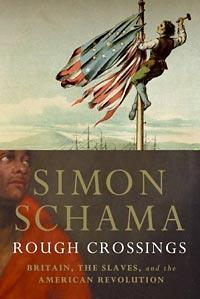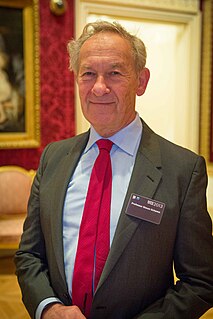
Sir Simon Michael Schama is an English historian specialising in art history, Dutch history, Jewish history, and French history. He is a University Professor of History and Art History at Columbia University, New York.

Black Loyalists were people of African descent who sided with the Loyalists during the American Revolutionary War. In particular, the term refers to men who escaped enslavement by Patriot masters and served on the Loyalist side because of the Crown's guarantee of freedom.
Thomas Peters, born Thomas Potters, was a veteran of the Black Pioneers, fighting for the British in the American Revolutionary War. A Black Loyalist, he was resettled in Nova Scotia, where he became a politician and one of the "Founding Fathers" of the nation of Sierra Leone in West Africa. Peters was among a group of influential Black Canadians who pressed the Crown to fulfill its commitment for land grants in Nova Scotia. Later they recruited African-American settlers in Nova Scotia for the colonisation of Sierra Leone in the late eighteenth century.

Lieutenant John Clarkson was a Royal Navy officer and abolitionist, the younger brother of Thomas Clarkson, one of the central figures in the abolition of slavery in England and the British Empire at the close of the 18th century. As agent for the Sierra Leone Company, Lieutenant Clarkson was instrumental in the founding of Freetown, today Sierra Leone's capital city, as a haven for chiefly formerly enslaved African-Americans first relocated to Nova Scotia by the British military authorities following the American Revolutionary War.
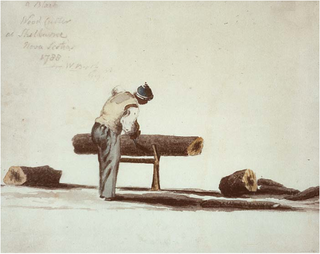
Black Indigenous Nova Scotians or African Nova Scotians are Black Canadians whose ancestors primarily date back to the Colonial United States as enslaved people or freemen, later arriving in Nova Scotia, Canada, during the 18th and early 19th centuries. As of the 2016 Census of Canada, 21,915 Black people live in Nova Scotia, most in Halifax. Since the 1950s, numerous Black Nova Scotians have migrated to Toronto for its larger range of opportunities. Before the immigration reforms of 1967, Black Nova Scotians formed 37% of the total Black Canadian population.

The Committee for the Relief of the Black Poor was a charitable organisation founded in London in 1786 to provide sustenance for distressed people of African and Asian origin. It played a crucial role in the proposal to form a colony for black refugees in Sierra Leone. The work of the Committee overlapped to some extent with the campaign to abolish slavery throughout the British Empire.

David George was an African-American Baptist preacher and a Black Loyalist from the American South who escaped to British lines in Savannah, Georgia; later he accepted transport to Nova Scotia and land there. He eventually resettled in Freetown, Sierra Leone. With other slaves, George founded the Silver Bluff Baptist Church in South Carolina in 1775, the first black congregation in the present-day United States. He was later affiliated with the First African Baptist Church of Savannah, Georgia. After migration, he founded Baptist congregations in Nova Scotia and Freetown, Sierra Leone. George wrote an account of his life that is one of the most important early slave narratives.
Boston King was a former American slave and Black Loyalist, who gained freedom from the British and settled in Nova Scotia after the American Revolutionary War. He later immigrated to Sierra Leone, where he helped found Freetown and became the first Methodist missionary to African indigenous people.
Harry Washington was a Black Loyalist in the American Revolutionary War, and enslaved by Virginia planter George Washington, later the first President of the United States. When the war was lost the British then evacuated him to Nova Scotia. In 1792 he joined nearly 1,200 freedmen for resettlement in Sierra Leone, where they set up a colony of free people of color.

The Book of Negroes is a document created by Brigadier General Samuel Birch, under the direction of Sir Guy Carleton, that records names and descriptions of 3,000 Black Loyalists, enslaved Africans who escaped to the British lines during the American Revolution and were evacuated to points in Nova Scotia as free people of colour.

Cline Town is an area in Freetown, Sierra Leone. The area is named for Emmanuel Kline, a Hausa Liberated African who bought substantial property in the area. The neighborhood is in the vicinity of Granville Town, a settlement established in 1787 and re-established in 1789 prior to the founding of the Freetown settlement on 11 March 1792.
The Jamaican Maroons in Sierra Leone were a group of just under 600 Jamaican Maroons from Cudjoe's Town, the largest of the five Jamaican maroon towns who were deported by the British authorities in Jamaica following the Second Maroon War in 1796, first to Nova Scotia. Four years later in 1800, they were transported to Sierra Leone.
The Snowball family was a prominent settler Creole family of Nova Scotian descent. The Snowballs were originally African-American slaves from "Princess Ann County, Virginia" and were formerly the property of Richard Murray. Nathaniel Snowball, who was the son of Violet Snowball and the brother of Mary Snowball, was only 12 years old when he was recorded in the Book of Negroes and described as a "fine boy. Formerly the property of Richard Murray of Princess Ann County, Virginia; left him 7 years ago". Nathaniel became a prominent settler and the patriarch of the Snowball family in Settler Town, Sierra Leone.
Moses "Daddy" Wilkinson or "Old Moses" was known as a Black Loyalist who gained freedom from slavery in Virginia during the American Revolutionary War, was a Wesleyan Methodist preacher in New York and Nova Scotia, and migrated in 1791 to Sierra Leone. There he established the first Methodist church in Settler Town and survived a rebellion in 1800.
Cato Perkins was an African-American slave from Charleston, South Carolina who became a missionary to Sierra Leone.

Birchtown is a community and National Historic Site in the Canadian province of Nova Scotia, located near Shelburne in the Municipal District of Shelburne County. Founded in 1783, the village was the largest settlement of Black Loyalists and the largest free settlement of ethnic Africans in North America in the eighteenth century. The two other significant Black Loyalist communities established in Nova Scotia were Brindley town and Tracadie. Birchtown was named after British Brigadier General Samuel Birch, an official who helped lead the evacuation of Black Loyalists from New York.
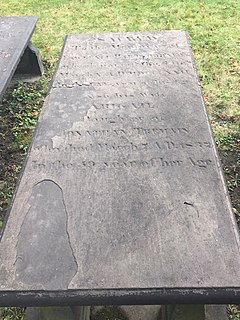
The Nova Scotian Settlers, or Sierra Leone Settlers were African-Americans who founded the settlement of Freetown, Sierra Leone and the Colony of Sierra Leone, on March 11, 1792. The majority of these black American immigrants were among 3000 African-Americans, mostly former slaves, who had sought freedom and refuge with the British during the American Revolutionary War, leaving rebel masters. They became known as the Black Loyalists. The Nova Scotian settlers were jointly led by African-American Thomas Peters, a former soldier, and English abolitionist John Clarkson. For most of the 19th century, the Settlers resided in Settler Town and remained a distinct ethnic group within the Freetown territory, tending to marry among themselves and with Europeans in the colony. Indigenous tribes in the region included the Sherbro and Mende.
John Kizell became known as a leader in Sierra Leone as it was being developed as a new British colony in the early nineteenth century. Believed born on Sherbro Island, he was captured and enslaved as a child, and shipped to Charleston, South Carolina, where he was sold again. Years later, after the American Revolutionary War, during which he gained freedom with the British and was evacuated to Nova Scotia, he eventually returned to West Africa. In 1792 he was among 50 native-born Africans among the 1200 mostly African-American Black Loyalists who were resettled in Freetown.
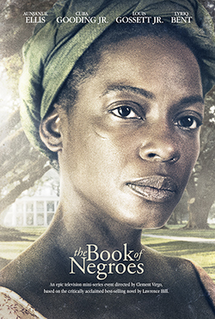
The Book of Negroes is a 2015 television miniseries based on the 2007 novel of the same name by Canadian writer Lawrence Hill. The book was inspired by the British freeing and evacuation of former slaves, known as Black Loyalists, who had left rebel masters during the American Revolutionary War. The British transported some 3,000 Black Loyalists to Nova Scotia for resettlement, documenting their names in what was called the Book of Negroes.
Montague James was a Maroon leader of Cudjoe's Town in the last decade of eighteenth-century Jamaica. It is possible that Maroon colonel Montague James took his name from the white superintendent of Trelawny Town, John Montague James.
